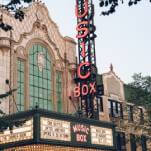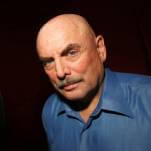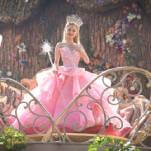Shawn Levy: Ready, Steady, Go!: The Smashing Rise And Giddy Fall Of Swinging London

From the way Ready, Steady, Go! author Shawn Levy describes England in the 1950s, just about any improvement would have made the succeeding decade feel like it was swinging. While much of the world enjoyed a post-war boom, England stumbled in its recovery. It was a decade of rationed food, crumbling empires, and timid attitudes that made the country, for the first time in centuries, feel as small and isolated culturally as it was geographically. Then came the boom. A film critic and social historian whose previous books covered Jerry Lewis and The Rat Pack, Levy can't logically explain why London became the center of the universe for several years in the '60s, but he offers plenty of details about how it happened. Taking an approach akin to that of Peter Biskind's Easy Riders, Raging Bulls, Levy chooses a handful of pivotal figures—photographer David Bailey, hairstylist Vidal Sassoon, fashion designer Mary Quant, art dealer Robert Fraser, Beatles manager Brian Epstein, Terence Stamp, The Rolling Stones—and follows them from one end of the decade to the other. The early figures all share a talent for addition by subtraction. While Quant and Sassoon reduced hair and fashion from frills to single, graceful lines, the Cockney-born Bailey brought a journalist's eye to glamour, grounding elegance in a world of corner shops and those who frequented them. Bailey's democratic impulses set the tone for a decade that made an idol of the working-class Stamp, and saw crowds following the middle-class Stones' path of legitimacy-through-slumming. More than a collector of facts, Levy is an engaging writer with an eye for emblematic details that capture a larger scene. The selectivity helps Ready, Steady, Go! reduce its busy topic to a manageable size, making sense of the shifts that changed swinging London from trad to mod to hippie to burnout in only a decade. Levy doesn't shy away from chronicling the decline that ended the scene, caused by the same elements that seem to end all good scenes: too much press, too much success-bred complacency, too many of the wrong drugs. Nor does he idealize away the elitism and contradictions of its heyday, when exclusive clubs played as great a role as any Chelsea throng. But for Levy, the ideals of '60s London (the freedoms they afforded and the restrictions they smashed) matter more than any of its messier details. "America had invented youth culture and then, frightened of its creation, found ways to stifle it," Levy writes by way of conclusion. "England gobbled it up, however, expanding it and perfecting it and turning it loose on the world in a package that would survive for decades." The Sassoon coif and the Beatles' strum have changed, but we remain their contemporaries.







































